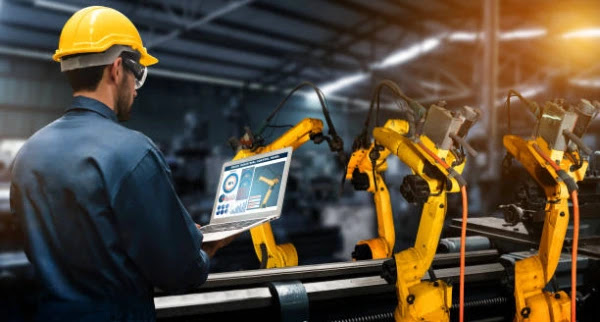Featured
- Get link
- X
- Other Apps
Augmented Reality (AR) and Virtual Reality (VR)
Smart Applications
Introduction
Augmented Reality (AR) and Virtual Reality (VR) technologies
have rapidly emerged as transformative tools across various industries,
including entertainment, healthcare, retail, and education. These immersive
technologies overlay digital information onto the real world (AR) or create
entirely virtual environments (VR), offering users unique and interactive
experiences. In the context of smart applications, AR and VR have the potential
to revolutionize how we interact with technology and the world around us. This
article explores the applications of AR and VR in smart technologies,
highlighting their benefits, challenges, and future prospects.
Applications in Smart Education: One of the most promising
applications of AR and VR is in the field of education. By creating immersive
learning experiences, these technologies can enhance student engagement and
comprehension of complex concepts. For example, AR applications can overlay
educational content onto real-world objects, allowing students to interact with
digital models of historical artifacts, scientific phenomena, or architectural
structures. Similarly, VR simulations can transport students to virtual
environments where they can explore historical landmarks, conduct science
experiments, or practice real-life skills in a safe and controlled setting.
These interactive learning experiences cater to different learning styles and
interests, making education more accessible and engaging for students of all
ages.
Healthcare and Medical Training: In the healthcare sector,
AR and VR technologies are revolutionizing medical training, patient care, and
surgical procedures. Medical students can use AR applications to visualize
anatomical structures in 3D, helping them better understand the human body and
prepare for complex surgeries. Surgeons can also use AR overlays during
procedures to view real-time data, such as patient vitals or medical images,
without taking their eyes off the operating field. Additionally, VR simulations
offer a safe environment for healthcare professionals to practice surgical
techniques, emergency response procedures, or patient interactions, reducing
the risk of errors and improving patient outcomes.
Enhanced Retail Experiences: AR and VR are also transforming
the retail industry by creating immersive shopping experiences and enhancing
customer engagement. AR applications allow shoppers to visualize products in
their own homes before making a purchase, using virtual try-on features for
clothing and accessories or previewing furniture and home decor in situ.
Similarly, VR technology enables retailers to create virtual storefronts and
interactive shopping environments, where customers can browse products,
interact with virtual assistants, and make purchases without leaving their
homes. These immersive experiences not only improve the customer experience but
also drive sales and brand loyalty for retailers.
Entertainment and Gaming: In the entertainment industry, AR
and VR have opened up new possibilities for storytelling, gaming, and
interactive experiences. AR applications allow users to interact with digital
characters and objects overlaid onto the real world, blurring the lines between
fantasy and reality. Popular AR games like Pokémon GO have demonstrated the
potential for location-based gaming experiences that encourage users to explore
their surroundings and interact with other players in real-time. Similarly, VR
gaming offers players immersive experiences that transport them to virtual
worlds, where they can interact with objects, characters, and other players in
ways not possible in traditional gaming environments.
Challenges and Considerations: Despite their numerous
applications and benefits, AR and VR technologies also present challenges and
considerations that must be addressed. One concern is the high cost of hardware
and development for creating immersive experiences, which may limit adoption
and accessibility for some users. Additionally, there are concerns about the
potential for motion sickness and discomfort when using VR headsets for extended
periods, particularly for users with certain medical conditions or
sensitivities. Furthermore, there are ethical and privacy considerations
surrounding the collection and use of user data in AR and VR applications,
particularly in areas such as advertising, surveillance, and behavioral
tracking.
Future Prospects: Looking ahead, the future of AR and VR in
smart applications is filled with exciting possibilities. As technology
continues to evolve, we can expect to see increasingly immersive and realistic
experiences that blur the lines between the physical and digital worlds.
Advances in hardware, such as lightweight and more comfortable VR headsets, as
well as improvements in software, such as more realistic graphics and natural
interactions, will drive adoption and innovation in this space. Additionally,
as AR and VR become more integrated into everyday devices and applications, we
can expect to see new use cases emerge across a wide range of industries, from
remote collaboration and virtual meetings to interactive storytelling and
experiential marketing.
Conclusion
AR and VR technologies are revolutionizing smart
applications across various industries, offering immersive and interactive
experiences that enhance education, healthcare, retail, entertainment, and
more. By leveraging these technologies, businesses and organizations can create
unique and engaging experiences that drive customer engagement, improve
learning outcomes, and transform how we interact with the world around us. While
there are challenges and considerations to address, the future of AR and VR is
bright, with endless possibilities for innovation and creativity in the years
to come.
- Get link
- X
- Other Apps


